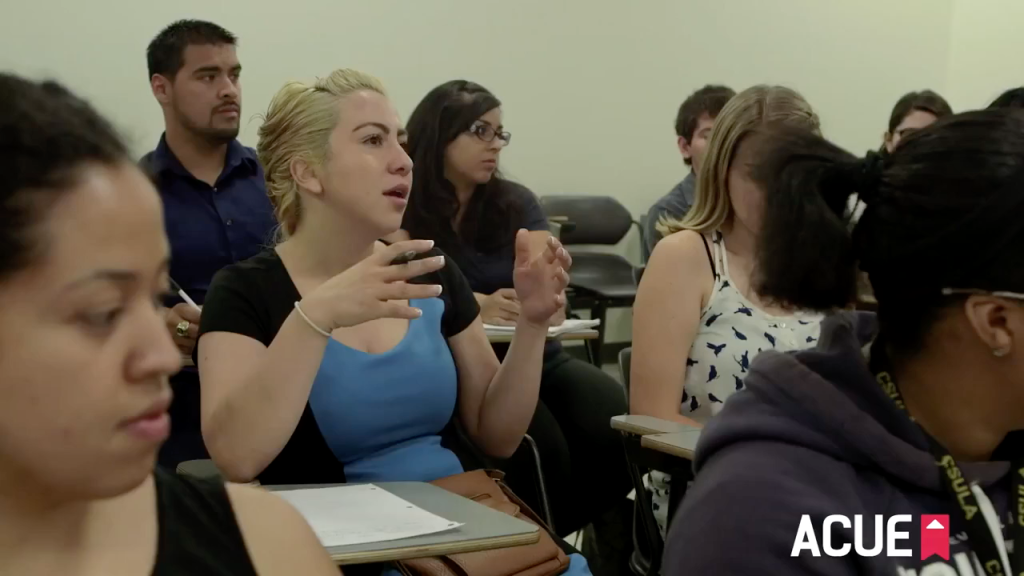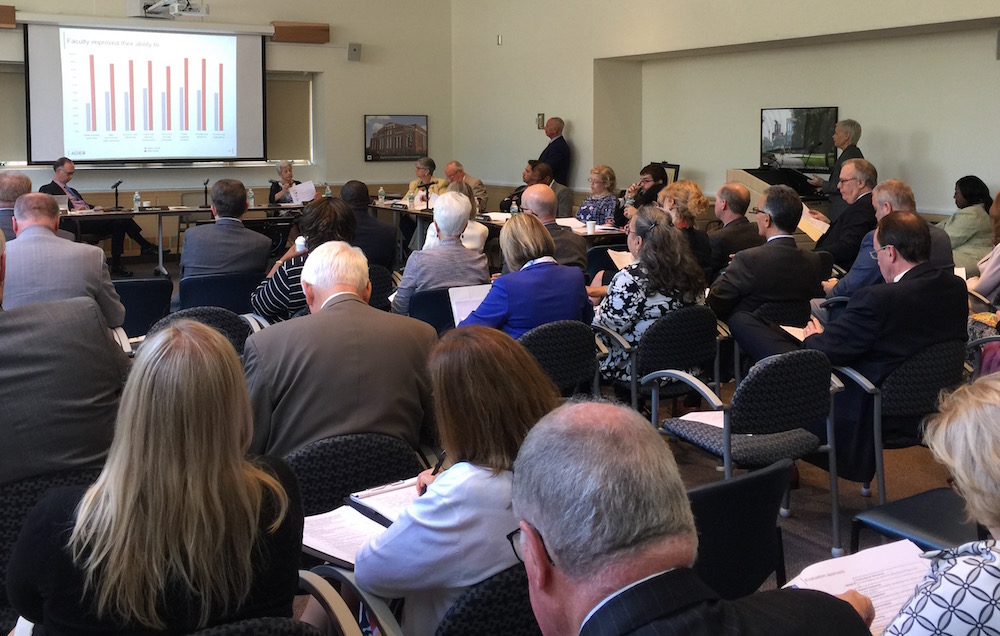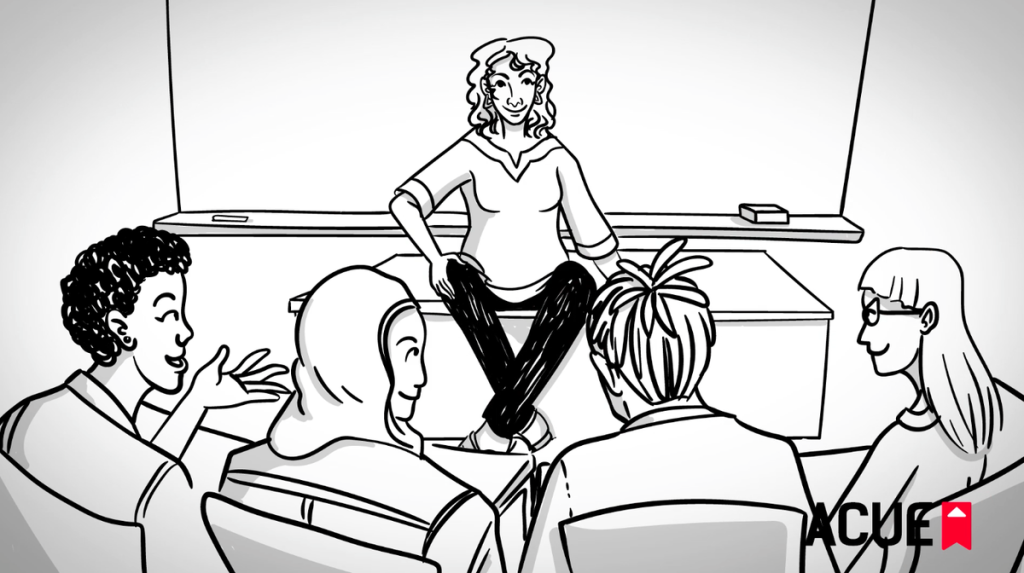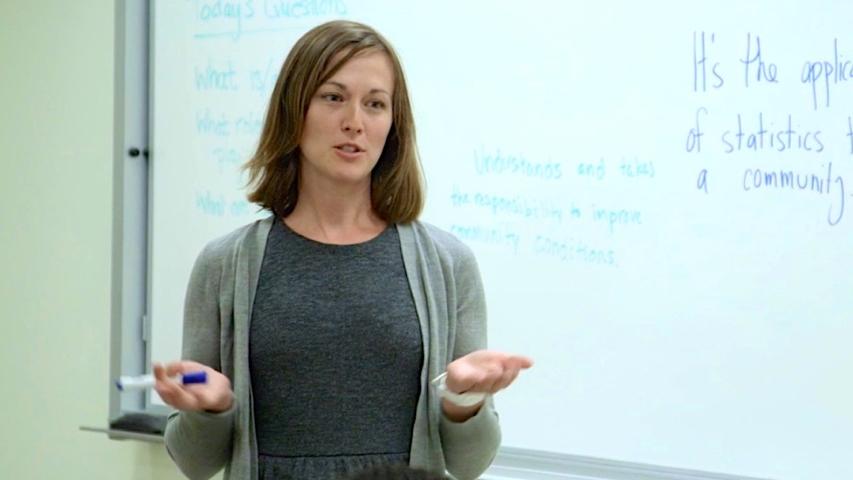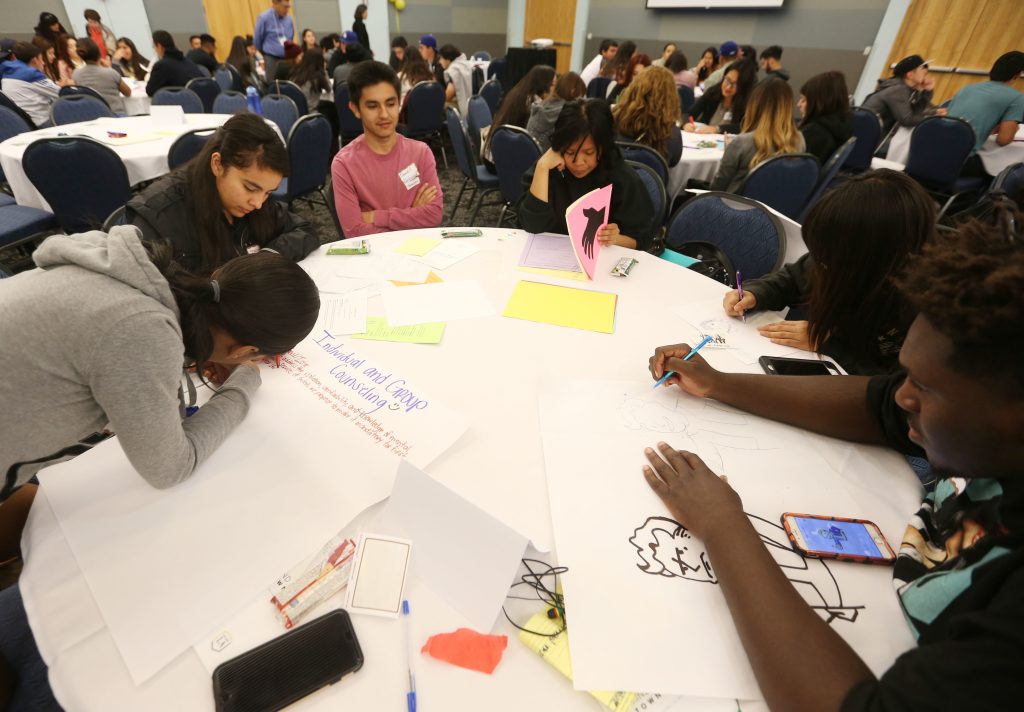When California State University, Los Angeles added a civic learning dimension to its general education curriculum last year, Elizabeth Crossman knew this would be an opportunity for her first-year students to become more engaged on their campus. Helping these students persist past their first year is at the heart of her work as an instructor and she knew that civic learning is a high-impact practice that teaches students to develop lifelong critical thinking skills.
A question remained. How would Crossman and her colleagues—campus wide—be prepared to embed civic learning projects into their courses, regardless of discipline?

Cal State LA’s Elizabeth Crossman
That question will take center stage on Friday at this year’s Civic Learning & Democratic Engagement Meeting in Baltimore. In the concurrent session, “Creating Assignments That Matter: How Cal State LA and ACUE Are Helping Faculty Develop Students’ Civic Values,” participants will learn how Cal State LA’s Center for Engagement, Service, and the Public Good, in partnership with ACUE, is preparing more faculty to incorporate civic learning assignments into their courses through a custom-designed online learning module. The interactive session will also allow attendees to experience the module.
As a featured speaker, Crossman will share how she learned to design and incorporate civic learning projects into her course, and the impact these projects have had on her students. We spoke with Crossman last week to hear about her teaching at Cal State LA and to get a preview of the session.
For those attending the conference, the session will take place on Friday, June 9 in Grand Ballroom Salon IV | 11:30 a.m. – 12:30 p.m. You can also join the conversation online by following the #CLDE17 hashtag.
How is civic learning a high-impact teaching practice that is particularly beneficial to first-year students?
EC: The classroom is really where we can best help students identify problems, think critically about these problems, and work together to come up with solutions. These are the skills that will prepare them to be involved and productive members in their communities and society as a whole.
And we should start teaching these skills early on, from the moment students step foot on campus. Our new freshmen need to get off to a good start, and studies show that if they don’t feel a connection to their campus community and faculty, then they are a lot more likely to drop out.
How did the civic learning module prepare you to integrate service learning projects into your teaching?
EC: A requirement at Cal State LA for all incoming freshmen is to take a life-long learning course. Starting last fall 2016, civic learning became a required component to these courses. This brought a big change to my course, Introduction to Higher Education. I definitely wasn’t that familiar with civic learning assignments, or how they could be effectively incorporated into the classroom. So taking ACUE’s civic learning module gave me the structure and tools I needed to create these assignments and implement them into my course. It gave me the foundation I needed, and it also brought me together with professors from other departments to learn how they were implementing civic learning into their courses.
How do you integrate service learning projects into your course?
EC: I start the course with exercises where the students get to know each other in the context of problem-solving activities. We start to brainstorm problems, then form into groups of three or four. Once they are in their groups, they have to identify a campus-based problem and create storyboards to visually map out all parts of the project. They have to break it up into an introduction, body, and conclusion.
Then they brainstorm what can be done to solve the problem, and I push them to provide actual substantial solutions. Why is this kind of solution needed? Is it sustainable? Is it feasible? They need to present realistic ideas that can have an impact. For instance, a lot of students identify parking on campus as a major problem, because there are a lot more people than there are spots. But their solution can’t simply be the construction of a major new parking lot facility. Where our campus is located in Los Angeles, there just isn’t enough space.
I also have them attend a town hall event held by the Center for Engagement, Service, and the Public Good. Attending this event counts toward their participation grades and it gives them an idea of how students in different majors are thinking about these projects.
Can you share an example of how students have been impacted by completing civic engagement projects?
EC: Last fall, a group of students came to me and said they wanted to do a short animated film about a problem. They completed a two-minute comedic strip that illustrated the frustrations that they, and other students, have had in dealing with different offices, like financial aid and the registrar. They showed students in long lines, students getting the run-around and bouncing from one office to the next. I know that for a lot of freshmen, this process is overwhelming. It can take forever, and the process can feel never-ending. The video captures this frustration in a creative and clear way.
Our administration values student feedback, especially from first-year students. Some students will say, “it’s not for me,” but we are working to identify problems and improve the experience to make sure they stay and complete their degree.
